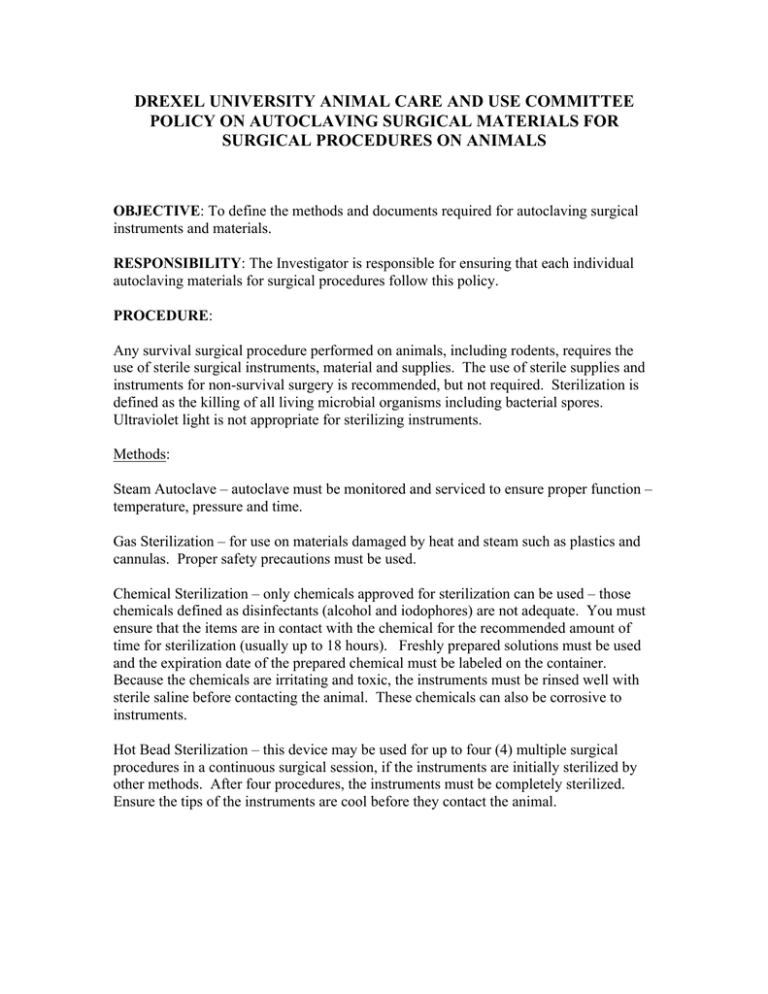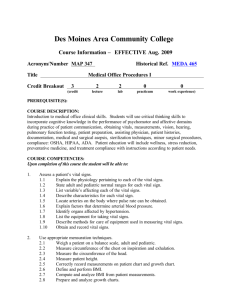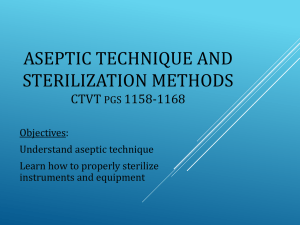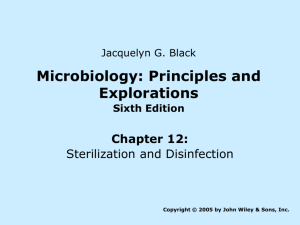DREXEL UNIVERSITY ANIMAL CARE AND USE COMMITTEE SURGICAL PROCEDURES ON ANIMALS
advertisement

DREXEL UNIVERSITY ANIMAL CARE AND USE COMMITTEE POLICY ON AUTOCLAVING SURGICAL MATERIALS FOR SURGICAL PROCEDURES ON ANIMALS OBJECTIVE: To define the methods and documents required for autoclaving surgical instruments and materials. RESPONSIBILITY: The Investigator is responsible for ensuring that each individual autoclaving materials for surgical procedures follow this policy. PROCEDURE: Any survival surgical procedure performed on animals, including rodents, requires the use of sterile surgical instruments, material and supplies. The use of sterile supplies and instruments for non-survival surgery is recommended, but not required. Sterilization is defined as the killing of all living microbial organisms including bacterial spores. Ultraviolet light is not appropriate for sterilizing instruments. Methods: Steam Autoclave – autoclave must be monitored and serviced to ensure proper function – temperature, pressure and time. Gas Sterilization – for use on materials damaged by heat and steam such as plastics and cannulas. Proper safety precautions must be used. Chemical Sterilization – only chemicals approved for sterilization can be used – those chemicals defined as disinfectants (alcohol and iodophores) are not adequate. You must ensure that the items are in contact with the chemical for the recommended amount of time for sterilization (usually up to 18 hours). Freshly prepared solutions must be used and the expiration date of the prepared chemical must be labeled on the container. Because the chemicals are irritating and toxic, the instruments must be rinsed well with sterile saline before contacting the animal. These chemicals can also be corrosive to instruments. Hot Bead Sterilization – this device may be used for up to four (4) multiple surgical procedures in a continuous surgical session, if the instruments are initially sterilized by other methods. After four procedures, the instruments must be completely sterilized. Ensure the tips of the instruments are cool before they contact the animal. Monitoring Sterility: Indicators of sterility must be included inside the pack or pouch containing the items being sterilized. These are commercially available strips which change colors to indicate that the internal area of the pack has reached temperatures of sterilization or the gas has penetrated the pack. In addition, autoclave tape on the outside of the pack may also be used to indicate the pack was sterilized. The date of sterilization should be written on the outside of the pack or pouch. The autoclave should also be biologically monitored on a quarterly basis. This involves placing a tube containing bacterial spores within a pack. The tubes are removed after the sterilization process and incubated to look for inadequate sterilization. These monitors can be obtained from ULAR. Record Keeping: A log must be maintained showing the dates the instruments were autoclaved. The actual internal pack sterilization monitor, showing adequate sterilization, must be attached to this log. These logs should be available for inspection by the IACUC, regulatory agencies and AAALAC. Records of results of autoclave spore testing should also be maintained. Shelf Life of Sterile Materials: Packs of sterile instruments or materials stored for more than a week should be doublewrapped in packaging which is impermeable to water. The date of sterilization should be clearly marked on the outer wrapper. Expiration dates vary with packaging materials, but a general guideline is two months from the date of sterilization. Using commercially available plastic dust covers or storing in closed cabinetry will extend the shelf life to 6-12 months. Approved: July 14, 2004 Last review date: February 8, 2012








